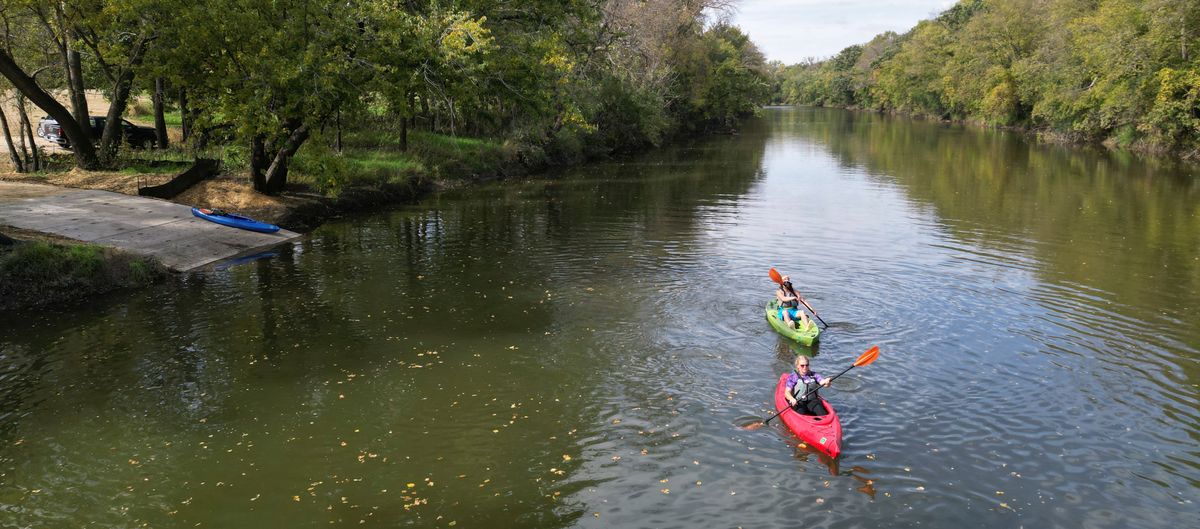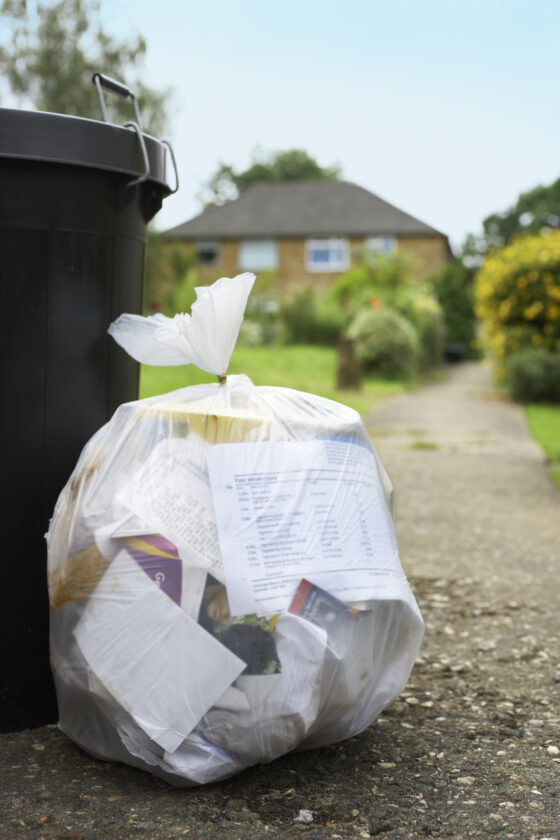On borrowed time: Why Cape Girardeau’s aging water system threatens ho… – seMissourian

Report on Municipal Water Infrastructure and its Impact on Sustainable Development Goals
Introduction: Infrastructure Failure as a Barrier to Sustainability
An analysis of the City of Cape Girardeau’s water system reveals critical infrastructure deficiencies that directly impede progress toward key United Nations Sustainable Development Goals (SDGs). The frequent failure of water mains, many dating to the 1930s, creates significant public health risks and economic disruption, undermining the principles of SDG 3 (Good Health and Well-being), SDG 6 (Clean Water and Sanitation), SDG 8 (Decent Work and Economic Growth), SDG 9 (Industry, Innovation, and Infrastructure), and SDG 11 (Sustainable Cities and Communities).
Infrastructure Deficiencies and Alignment with SDG 9 and SDG 6
Failing Infrastructure vs. SDG 9: Industry, Innovation, and Infrastructure
The city’s water distribution system is characterized by antiquated pipes installed during an era when substandard materials were used due to wartime resource allocation. These assets do not meet the modern requirements for resilient infrastructure as outlined in SDG 9. The consequences of this systemic failure are frequent main breaks that disrupt service for residential and commercial areas, and in some cases, the entire city.
Proposed Investment for Resilient Infrastructure
A long-term initiative has been identified to address these shortcomings, aligning with the goals of SDG 9 to upgrade infrastructure. The plan includes:
- An initial investment of $46 million targeting high-priority water mains.
- A further $64 million in work to upgrade the remainder of the city’s water distribution system.
Challenges to SDG 6: Clean Water and Sanitation
Each water main failure necessitates the issuance of boil-water advisories, a direct indicator that the provision of safely managed drinking water (a core target of SDG 6) is compromised. In the first half of 2025 alone, the city issued nine such advisories, highlighting a chronic inability to guarantee water safety and reliability for its citizens.
Impact on Public Health and Economic Stability
Threats to SDG 3: Good Health and Well-being
The city’s two hospitals, Saint Francis and Mercy Southeast, are critically affected by water service disruptions, posing a direct threat to public health and the achievement of SDG 3.
Hospital Operational Dependencies
Hospitals require a continuous and reliable supply of clean water for numerous essential functions, including:
- Heating and cooling systems (steam-based)
- Advanced filtration for dialysis care
- Surgical instrument processing and sterilization
- Patient hygiene and care
- Laundry and linen services
- Food preparation for patients, staff, and visitors
- General sanitation and hand-washing
During boil-water advisories, hospitals are forced to activate emergency plans, relying on finite on-site water tanks and extensive use of bottled water. While Cape Girardeau has thus far avoided patient transfers, the risk remains significant. Precedents in other U.S. cities demonstrate the potential for severe disruption to healthcare services:
- Atlanta, Georgia (June 2024): Emory University Hospital Midtown transferred dialysis patients after major water line breaks.
- Richmond, Virginia (January 2025): Hospitals canceled outpatient procedures and closed ambulatory care centers following water system failure.
- Austin, Texas (February 2021): St. David’s South Austin Medical Center lost heat and was forced to transfer patients.
- Springfield, Missouri: Mercy Hospital required approximately 120,000 bottles of water to manage through a main break.
Impediments to SDG 8 (Decent Work and Economic Growth) and SDG 11 (Sustainable Cities)
The city’s more than 140 restaurants and numerous convenience stores suffer significant economic and operational disruption during water advisories, hindering progress toward SDG 8. These events undermine the economic vitality necessary for a sustainable community as envisioned in SDG 11.
Operational and Economic Burdens on Businesses
During a boil-water advisory, businesses face numerous challenges that increase costs and disrupt service:
- Inability to serve fountain drinks or use automatic ice machines.
- Requirement to boil all water for food preparation, dishwashing, and hand-washing.
- Increased reliance on costly bottled water and canned beverages, which can lead to local shortages.
- Potential use of disposable dishes and cutlery, increasing waste and operational costs.
As noted by local business owners and the Missouri Restaurant Association, repetitive and unexpected boil orders are “devastating” to operations and increase costs. This unreliability threatens the local economy and diminishes the quality of life, making it difficult to attract and retain residents and businesses, a core tenet of SDG 11.
Analysis of Sustainable Development Goals in the Article
1. Which SDGs are addressed or connected to the issues highlighted in the article?
The article highlights issues related to failing water infrastructure and its consequences, which directly and indirectly connect to several Sustainable Development Goals (SDGs). The primary goals addressed are:
- SDG 6: Clean Water and Sanitation: This is the most central SDG, as the article’s main topic is the failure of the water distribution system, leading to boil-water advisories and a lack of reliable, safe drinking water.
- SDG 3: Good Health and Well-being: The article extensively discusses the severe impact of water disruptions on hospitals, affecting patient care, sterilization, dialysis, and emergency preparedness, which are all critical components of public health.
- SDG 9: Industry, Innovation and Infrastructure: The root cause of the problem is aging and inadequate infrastructure (“pipes… from like the 1930s era”). The proposed solution involves significant investment in upgrading this infrastructure, which is the core of SDG 9.
- SDG 8: Decent Work and Economic Growth: The economic impact on local businesses, particularly the more than 140 restaurants, is detailed. Water disruptions increase operational costs, hinder service, and threaten the viability of these businesses, thereby affecting the local economy.
- SDG 11: Sustainable Cities and Communities: The issue is presented as a city-wide problem that affects the quality of life, safety, and resilience of the entire community. The failure of a basic service like water supply makes the city less sustainable and safe for its inhabitants.
2. What specific targets under those SDGs can be identified based on the article’s content?
Based on the issues discussed, several specific SDG targets can be identified:
- Under SDG 6 (Clean Water and Sanitation):
- Target 6.1: “By 2030, achieve universal and equitable access to safe and affordable drinking water for all.” The article directly addresses the failure to meet this target, as frequent main breaks and subsequent boil-water advisories mean residents and businesses do not have reliable access to safe drinking water.
- Under SDG 3 (Good Health and Well-being):
- Target 3.d: “Strengthen the capacity of all countries, in particular developing countries, for early warning, risk reduction and management of national and global health risks.” The article shows how hospitals must activate “incident command” and “emergency plans” due to the health risks posed by water contamination, highlighting the need for better risk management of basic utilities.
- Under SDG 9 (Industry, Innovation and Infrastructure):
- Target 9.1: “Develop quality, reliable, sustainable and resilient infrastructure, including regional and transborder infrastructure, to support economic development and human well-being, with a focus on affordable and equitable access for all.” The article is a case study of the consequences of unreliable infrastructure. The proposed plan to invest “$46 million” and “$64 million” to upgrade water mains is a direct action toward achieving this target.
- Under SDG 8 (Decent Work and Economic Growth):
- Target 8.2: “Achieve higher levels of economic productivity through diversification, technological upgrading and innovation…” The article illustrates how failing infrastructure hinders the productivity of the restaurant sector, forcing them to adopt costly and inefficient processes. A restaurant owner states, “If you’re going to have a good local economy… you have to have quality water and reliable water.”
- Under SDG 11 (Sustainable Cities and Communities):
- Target 11.5: “By 2030, significantly reduce the number of deaths and the number of people affected and substantially decrease the direct economic losses relative to global gross domestic product caused by disasters, including water-related disasters…” The water main breaks are described as recurring “disasters” that affect the entire city and cause direct economic losses for businesses like restaurants.
3. Are there any indicators mentioned or implied in the article that can be used to measure progress towards the identified targets?
Yes, the article mentions and implies several quantitative and qualitative indicators that can be used to measure progress:
- Frequency of service disruption: The article explicitly states, “There have been nine boil-water advisories issued in the City of Cape Girardeau in 2025 through late June.” This is a direct indicator for Target 6.1, measuring the reliability of the water supply. A reduction in this number would indicate progress.
- Investment in infrastructure: The article mentions specific financial figures for the proposed solution: “$46 million toward the distribution system” and “$64 million worth of work that would upgrade the rest of the mains.” This serves as a direct indicator for Target 9.1, tracking financial commitment to infrastructure resilience.
- Economic impact on businesses: The article describes how restaurants are “devastating[ly]” affected by increased costs and disrupted operations. While not quantified, the number of businesses affected (over 140 restaurants) and the types of disruptions (inability to use fountain drinks, ice machines, or tap water for cleaning) are indicators of economic loss (relevant to Target 11.5).
- Impact on essential health services: The article provides examples of canceled medical procedures (“endoscopy procedures, outpatient diagnostic testing and imaging appointments were canceled” in Richmond) and patient transfers (“Emory University Hospital Midtown in Atlanta was forced to transfer dialysis patients”). These events are measurable indicators for Target 3.d, reflecting the severity of health system disruptions.
- Emergency resource consumption: The amount of bottled water required during an advisory is an implied indicator. The article notes that one hospital “went through 8,000 bottles of water almost immediately” and that city-wide advisories have “wiped out the stock at local grocery stores.” Tracking this consumption can measure the scale of the disruption.
4. Table of SDGs, Targets, and Indicators
| SDGs | Targets | Indicators Identified in the Article |
|---|---|---|
| SDG 6: Clean Water and Sanitation | 6.1: Achieve universal and equitable access to safe and affordable drinking water for all. |
|
| SDG 3: Good Health and Well-being | 3.d: Strengthen capacity for early warning, risk reduction and management of national and global health risks. |
|
| SDG 9: Industry, Innovation and Infrastructure | 9.1: Develop quality, reliable, sustainable and resilient infrastructure. |
|
| SDG 8: Decent Work and Economic Growth | 8.2: Achieve higher levels of economic productivity through upgrading and innovation. |
|
| SDG 11: Sustainable Cities and Communities | 11.5: Reduce the number of people affected and decrease direct economic losses caused by water-related disasters. |
|
Source: semissourian.com

What is Your Reaction?
 Like
0
Like
0
 Dislike
0
Dislike
0
 Love
0
Love
0
 Funny
0
Funny
0
 Angry
0
Angry
0
 Sad
0
Sad
0
 Wow
0
Wow
0












































































